For my summary of learning for this course, I wanted to do something that fit well with the educational technology topic of the class and allowed me to use various digital platforms in order to complete. My idea began with wanting to structure it in a similar manner to a movie review, but reviewing the class instead. To tie in with the educational technology aspect, I opted to try my hand at creating a Podcast episode using Canva that I uploaded to YouTube to post here. Have a look and feel free to share you thoughts and tips on how my first attempt at a podcast worked out as my last blog post of the semester!
Category: EDTC 300 (Page 1 of 3)
As this semester draws to a close, I find myself thinking not only about what I have learned during this class but also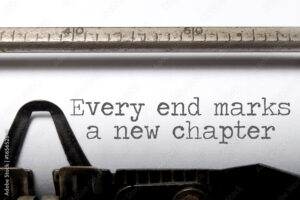 how I have contributed to the learning of my fellow classmates. As I move forward into my teaching career, the importance of professional networked learning will become paramount, especially as a new teacher. This class has given me the opportunity to explore new ways of connecting in the digital age which allows me to collaborate with others as I create my professional presence online.
how I have contributed to the learning of my fellow classmates. As I move forward into my teaching career, the importance of professional networked learning will become paramount, especially as a new teacher. This class has given me the opportunity to explore new ways of connecting in the digital age which allows me to collaborate with others as I create my professional presence online.
Zoom Classes
Attending and participating in online classes can be tricky, especially within the dreaded breakout rooms. I often shared my experiences and ideas within our class time and breakout rooms in a professional and respectful manner. I even was the first to speak up and offer to have my first blog post looked at in class and have feedback given by peers and the instructor on what I did well and how I could improve. In doing so, my peers had the opportunity to learn more of what our blogs should look like and contain in a safe and comfortable way.
Blog Posts
Over the course of the semester, I created weekly blog posts following the prompts given in the weekly plans as well as posts documenting my learning project journey in exploring teacher artificial intelligence. I tried to use a variety of media within my posts such as videos I created, screencasts with step by step instructions on how to use certain tools such as Canva Magic Write and Magic School and even created my first TikTok post.
@mrsb653
In addition to creating my own posts, I would read and comment on my classmates’ posts weekly, making connections on what they had written as well as providing feedback on what was effective within their posts.


I also tried to respond to anyone who left a comment or feedback on one of my posts in the hopes of making further connections and continuing the conversation.
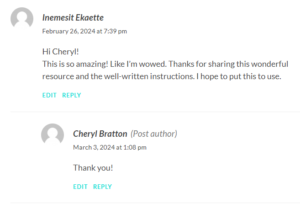
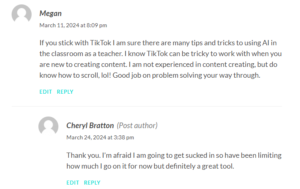
Discord
I joined the classroom community and introduced myself at the beginning of the semester and tried to watch it as closely as I could while also working full time and having a young child at home. I answered others’ questions as often as I could in a positive and helpful manner, even including screenshots to help out. I did not have the need to ask any questions myself and tried to keep up with all the posts, but it was challenging for sure.
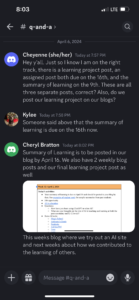
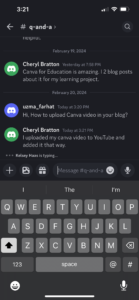


Overall, I think I have positively contributed to the learning of others within this class by sharing my experiences with technology that is very different from my classmates, both in class and through the online platforms of blog posts and discord. I also began to develop a professional network with teachers at the school I work at by sharing with them tools that were shared in class such as Read Aloud And Postlight Reader as well as the link to my learning project blog on teacher AI. Just goes to show what a valuable resource professional networks can be and I am grateful for the experience. Thank you for joining me!
As this semester draws to a close, so does my experience with my online learning project. I have to admit, I was slightly irritated by this assignment initially…ok maybe more than slightly, but the thought of trying to find time to learn how to do something trivial online was infuriating and daunting. Luckily my brain made a connection between the need to learn how to do something online for this class and the requirement to use teacher A.I. in another class. Why not kill two birds with one stone and document my learning of teacher A.I. as I explore and use it for another class…work smarter not harder!!
by this assignment initially…ok maybe more than slightly, but the thought of trying to find time to learn how to do something trivial online was infuriating and daunting. Luckily my brain made a connection between the need to learn how to do something online for this class and the requirement to use teacher A.I. in another class. Why not kill two birds with one stone and document my learning of teacher A.I. as I explore and use it for another class…work smarter not harder!!
The use of A.I. in education is often fraught with controversy and many ethical dilemmas. In my role as an educational assistant I have caught my fair share of students using AI technology such as ChatGPT and PhotoMath to cheat or do the work for them, and that type of use I am against. A conversation with a veteran teacher at work first opened my eyes to the possibility that AI might actually be able to Save(Not Destroy) Education provided we view and use it as a tool to enhance and differentiate our teaching while easing our workload. And so I decided to bring other future teachers along as I embarked on a journey of discovering the possibilities presented by teacher AI.
Recap
Week 1: The Future is Now: Exploring Teacher A.I.
- Introducing the idea of teacher A.I. programs
- Sharing my decision making process in choosing this for my learning project
- Listed 3 programs I planned to explore in the upcoming weeks;
Week 2: Do You Believe in Magic? You will!
- Sharing my first teacher A.I resource, Canva Magic Write
- Included information on the free Canva for Education edition available for free to all teachers.
- Brief overview of what kinds of things Canva Magic Write for Education can do
Week 3: Harnessing the Magic of Canva A.I.
- This week I learned how to use an online screen casting tool to give a step by step demonstration of some of the features of Canva Magic Write
- Used Canva Magic Write to create a vlog post
- Challenged to explore a new online tool to document our learning this week
- Created an infographic introducing Google Brisk AI using Picktochart
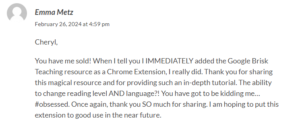
Week 5: The Tool That Changes Everything
- Chose this tool to explore based on the recommendation of one of the Learning Resource Teachers (LRT) at work
- Highlighted the change level and language features and how they would benefit students
- Shared video You Can do WHAT with Google Chrome Extension Brisk Teaching to highlight additional features
Week 6: Thanks TikTok! No really, THANK YOU!
- Explored social media platform TikTok as a resource for learning about teacher AI programs
- Shared influencers I found helpful such as @teach2ai, @jessicam.reid and @msprincessteach
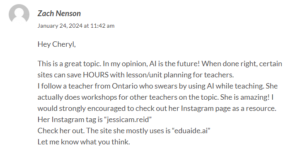
- Highlighted the additional resources available at The Resilient Teacher
Week 7: From Setback to Success! My First TikTok Post
- Decided to expand my online learning further by trying to create my own TikTok post
@mrsb653 - Shared my struggles and eventual success with navigating this online tool
- While working on another assignment for another class, I discovered something very frustrating with my MagicSchool AI
- Created a vlog to share what I noticed and my thoughts about what I found
- Introduced the new Magic Student AI and posed the question whether or not we should teach our students how to use AI
- Exploring the role AI will play in our classrooms
- Shared resources to help us navigate incorporating AI into our teaching such as;
- Alberta Teachers Association Artificial Intelligence in Education
- AI for Teachers website
- AI Guidance for Schools Toolkit created by code.org
- Created short videos using Powtoon to share my favourite teacher AI tools that I discovered over the course of this project including;
- Google Brisk level and translate
- Slide templates from Canva Magic Write
- Magic School AI rubric and unit plan generators
Top Takeaways from this experience of learning and documenting my learning online:
- AI programs can have a place in our classrooms and teaching provided we are using it as a tool to supplement our own contributions and not a substitute for our knowledge. We still need to tweak and adapt AI generated resources to meet the needs of our students. There is a wide variety of resources out there to help with many aspects of our teaching and planning, we just have to find them.
- Social media platforms such as TikTok, Facebook and Instagram can be invaluable tools for online learning as well as sharing our learning with other teachers that you otherwise never would have been able to. It is a great place to start when looking for AI resources by seeing what other teachers and influencers are talking about and have found helpful.
- Blogging (and the occasional vlog) provide a great way to share information with colleagues and receive instant constructive feedback and tips. I have actually shared the link to my learning project blog with several work colleagues who were intrigued with the AI resources I was finding and wanted to learn more. The informal nature of the writing and ability to express my genuine thoughts and personality was appreciated and a refreshing break from the usual academic writing.
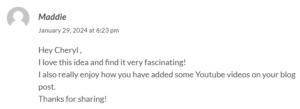
- It is very very easy to get overwhelmed and fall down the rabbit hole of information, especially YouTube videos and TikTok posts, but at the same time, it is possible to set and maintain healthy boundaries around social media usage that will prevent this.
Parting thoughts
 Reflecting on this online learning project including the challenges I’ve overcome and the knowledge I’ve gained, I can proudly say that I have embraced the power of online learning and teacher AI programs. I have expanded my thinking to include platforms outside of the typical internet and Google searches (and my own comfort zone) by embracing and learning new platforms such as TikTok in order to ensure I am receiving and sharing the best tools out there. As I write this final blog post, I am filled with a sense of accomplishment and excitement for the continued growth that lies ahead and am grateful for this experience that has pushed me to adapt, grow, and thrive in the digital age.
Reflecting on this online learning project including the challenges I’ve overcome and the knowledge I’ve gained, I can proudly say that I have embraced the power of online learning and teacher AI programs. I have expanded my thinking to include platforms outside of the typical internet and Google searches (and my own comfort zone) by embracing and learning new platforms such as TikTok in order to ensure I am receiving and sharing the best tools out there. As I write this final blog post, I am filled with a sense of accomplishment and excitement for the continued growth that lies ahead and am grateful for this experience that has pushed me to adapt, grow, and thrive in the digital age.
Thank you for joining me on my journey from AI novice to educational technology ninja.
This week we were challenged to explore an AI tool and reflect on how it could be used in the classroom. My learning project for this semester has been me learning to use a variety of AI tools specifically designed for teachers. In keeping with that learning, I opted to check out a tool I had seen mentioned but hadn’t had a chance to try yet, Diffit.
@msgreeneedu Diffit is the best AI for teachers. It can generate so many resources that are differentiated! teachersoftiktok teacher edtechteachers
Diffit is an AI powered tool that helps teachers to differentiate a variety of reading activities in the classroom. Teachers can choose to generate resources directly from any text or excerpt by copy and pasting or uploading a pdf, from a video or online article by providing the URL or from “literally anything” by providing a topic, theme or question and letting AI do it all. The program is free for teachers to use, however there are some features that are part of the premium package which you have free trial access to for 60 days after creating your account.
The program allows teachers to generate activities such as an adapted reading passage, vocabulary lists, summaries and test questions at the reading level and/or language that best suits individual students’ abilities allowing us to individualize our lessons to maximize student success without adding hours of extra work. Diffit can also support English as an additional language (EAL) learners by allowing them to complete their assignments in the language they are most familiar with and use any text or excerpt function to translate their work into English for submission.
and test questions at the reading level and/or language that best suits individual students’ abilities allowing us to individualize our lessons to maximize student success without adding hours of extra work. Diffit can also support English as an additional language (EAL) learners by allowing them to complete their assignments in the language they are most familiar with and use any text or excerpt function to translate their work into English for submission.
One question I had while I was experimenting with this tool was about potential copyright infringement with being able to upload articles, videos or copy and paste text into Diffit. The CMEC Copyright, Fair Dealing and the Classroom presentation may provide some guidance in determining what teachers can and can not use in AI tools, and the Fair Dealings Tool can provide a quick reference. Personally, as much as I loved the features that Diffit offered, I would definitely want more clarification from my district regarding possible concerns before using it with copyrighted content.
AI tools such as Diffit are becoming more and more common and can play a valuable and vital role in our classrooms by making it easier for teachers to differentiate and adapt resources to better meet the needs of all learners without adding to an already excessive workload. AI programs should be used as a tool to enhance our teaching and learning resources, rather than relied on as the sole source of information. What are your thoughts on AI in the classroom?
So now that I have spent all this time exploring various teacher A.I. programs, which ones did I find the most useful and would recommend? I made a few short videos using Powtoon which I planned to put together into one cohesive video highlighting how to use my favourite tools, however the free version of Powtoon only allows a 3 minute video without paying. After several hours of trying to get the idea in my head out on a computer, and several not so nice words, I decided to just share the individual videos I created of each tool.
Have a look and let me know your favourites!
Google Brisk – Level and Translate Features
Canva Magic Write – Slide Templates
Magic School A.I. – Rubric Generator
Magic School A.I. – Unit Plan Generator
I was lucky enough to grow up in a time before the digital age, an era often lovingly referred to as Generation X. Our mistakes were often forgotten with time, Our embarrassing moments and missteps didn’t haunt us for years to come and we didn’t have our jobs and livelihoods put in jeopardy because of something we did when we were a dumb teenager.
However, in today’s digital world every post, comment, or photo we share online contributes to our digital footprint, shaping how others perceive us and potentially following us indefinitely. This permanence means that even the smallest indiscretions can have long-lasting effects on a person’s reputation and future opportunities. But should these mistakes of our past have an expiry date? Should employers, schools, and even potential romantic partners conduct online searches to learn more about us and make snap judgements based on what they find?
Here I am now, in my forties, about to become a teacher. I have done my fair share of stupid things in the past but I have learned from these mistakes and grown and changed. The me of today is very very different from the me of a month ago let alone ten or twenty years and lucky for me growing up in age without social media, I haven’t had to worry about having those things follow and haunt me forever. In today’s digital world, we have to protect ourselves and individuals from the potentially harmful consequences of a permanent digital record, such as those faced by Monica Lewinski for over twenty years.
While some feel cyber-vigilantism is often defended as a form of justice where individuals become judge, jury and executioner and hold individuals accountable for behaviour deemed as inappropriate or offensive. While it can have positive outcomes, more often than not it does more harm than good by providing a socially acceptable way for self-appointed “authorities” to commit online harassment and harm individuals’ reputations without due process. They can even take things a step further with cyberbullying such as was the case for Alec Couros detailed in the blog The Curious Case of Srkj Rife, “Victim”-Turned-Harasser.
While it is clear that we need to strike a balance between accountability and forgiveness in the digital realm, how exactly to go about it is complex. Perhaps creating multiple online identities tailored to a specific audience is the best way to keep our personal and professional selves completely separate and ensure that we are not haunted by our past mistakes forever.
In today’s digital world, it is imperative that our students have the skills necessary to not only succeed in our ever changing technological landscape but to be able to separate fact from fiction. When we talk about digital literacy, many 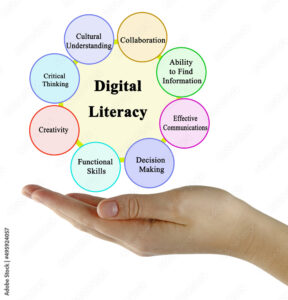 believe it is our ability to effectively use the various technologies available. But this narrow thinking fails to consider the critical thinking skills that are necessary to evaluate what we see online. Incorporating digital literacy into the curriculum equips students with the skills needed while empowering them to become responsible citizens.
believe it is our ability to effectively use the various technologies available. But this narrow thinking fails to consider the critical thinking skills that are necessary to evaluate what we see online. Incorporating digital literacy into the curriculum equips students with the skills needed while empowering them to become responsible citizens.
While the outdated outcomes of the Saskatchewan Curriculum does not specifically address digital literacy, it does identify goals for education that are achieved through Broad Areas of Learning such as building engaged citizens and the common essential learnings of developing thinking, developing literacies and developing social responsibility. Teaching our students about digital literacy connects directly to these broad areas of learning and cross-curricular competencies with connections easily made in a variety of subject areas such as English, Social Studies and Health Education.
Before we can figure out how to incorporate digital literacy into our lessons and curriculum we must first identify what it is they need to learn. The National Council of Teachers of English has provided a definition of literacy in a digital age that identifies nine things that active and successful participants in a global society, such as ours, need to be able to do and do well. Following this framework, teachers can adopt a variety of approaches such as John Spencer’s The Five C’s of Critical Consuming that provides students with a framework for how to consume critically while developing crucial critical thinking skills.

Online resources and lesson plans such as Fighting Fake News provide students with authentic learning opportunities and tasks that allow them to explore and develop vital skills such as how to recognize different types of misleading news, or what criteria they should consider when choosing what news to trust and use. Students have first hand knowledge of how quickly misinformation can spread in today’s digital age, just ask them about the last big event that happened at school, how fast everyone knew about and how accurate what they first heard was from what really took place. It is essential that we provide them with the skills necessary to recognize and bust those myths when they see them.
Last week I posed the question, “Do you think we should be teaching our students how to effectively and safely use AI?” The use of AI in general can be a very touchy subject with very polarizing beliefs. Like it or not, AI is not going anywhere and whether we allow it or not, our students are going to find ways to use it. So what if, instead of condoning it’s use, we embrace it and teach our students how to use it effectively and efficiently?
As I explored the use of teacher AI, and once I found Magic Student, I found myself thinking more and more about the role AI and its effective use of it will play in the lives of our students. As such, do we have a responsibility as educators to be embracing this technology and showing our students how to use it for good? What resources are out there to help us navigate adding this to our curriculum? So I went looking, and was surprised at what I found.
The Alberta Teachers Association Library has created an entire section titled “Artificial Intelligence in Education” with links to numerous articles, videos, blog posts and even student perspectives on AI in our classrooms. In fact there is  even one titled AI 101 For Teachers that is designed specifically for teachers who are interested in exploring AI and it’s potential to transform education as we know it.
even one titled AI 101 For Teachers that is designed specifically for teachers who are interested in exploring AI and it’s potential to transform education as we know it.
AI For Teachers is another great site that provides a host of resources and professional development opportunities. Not only is this site designed to support teachers as they integrate artificial intelligence into the classrooms, it also provides a host of educational resources such as lesson plans to incorporate all kinds of educational technology into our classes such as coding, facial recognition and even a unit plan on the ethics of artificial intelligence.
Code.org has also created an AI Guidance For Schools Toolkit that is deigned to help school systems at every level worldwide to develop guidance and inform policy on the responsible use of AI and includes sections specifically designed to guide teachers in their own use as well as students’ use of AI to complete assignments. The goal of this toolkit is to provide a framework around incorporating AI into our educational systems.
Think of all of the technology we currently use in our classrooms that were once considered  unimaginable or something not to be trusted. Computers, VCR’s, television, projectors all at one time were viewed and questioned much in the same way we are now with AI. If the goal of education is to prepare our students for the future then we owe it to them to prepare them for one that includes AI because it’s here to stay.
unimaginable or something not to be trusted. Computers, VCR’s, television, projectors all at one time were viewed and questioned much in the same way we are now with AI. If the goal of education is to prepare our students for the future then we owe it to them to prepare them for one that includes AI because it’s here to stay.
When I was working on some other assignments, I came across something very tricky in my Magic School and decided to create a vlog about it. Check it out and let me know your thoughts!
This week we were challenged to experiment with coding. Now if I am being honest, just the mention of the word coding makes me cringe and instantly feel confused and overwhelmed, something I am sure many of our students face. But with our ever changing digital world it is important we expand our students’ knowledge about coding and help it to be a little less scary.
I chose to explore the Hour of Code to test the waters of coding and as a future middle years teacher, I selected grade 6 – 8. There were multiple options to pick from creating your own Code Farm to Dance Party to my choice, create your own Google logo.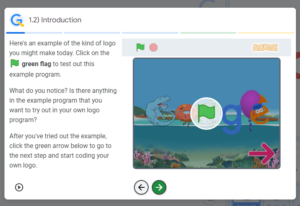
I really appreciated the step by step tutorial that the site offered, walking you through all the different features and how to build code. One thing that would have been more helpful, for me anyway, was to have more specific directions on where to find certain blocks such as giving the specific category. 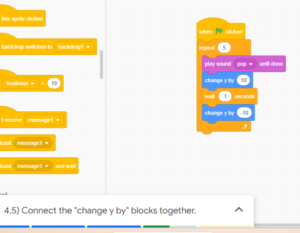 While they did do this for some, most of the time I found myself scrolling endlessly through trying to find the right one and felt myself getting agitated by it.
While they did do this for some, most of the time I found myself scrolling endlessly through trying to find the right one and felt myself getting agitated by it.
In the end I persevered and was able to create my own Google logo with the code I had created. Let me know what you think!